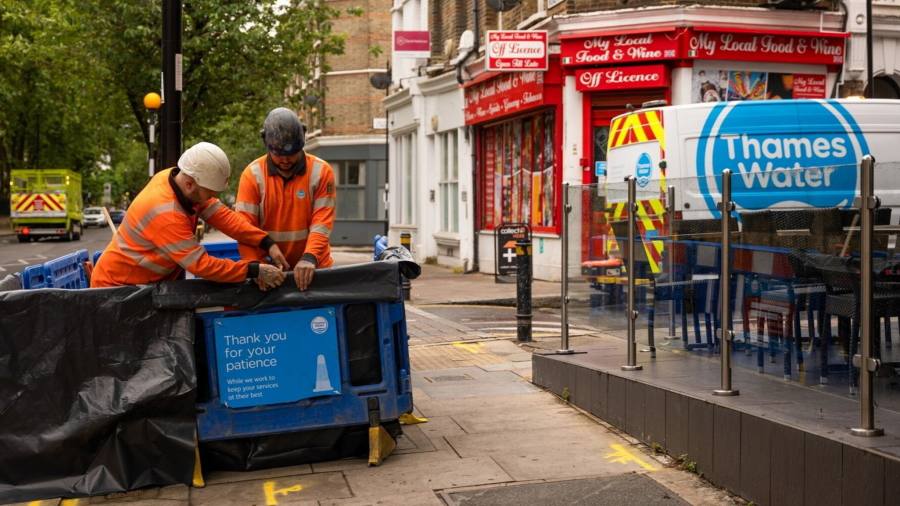Receive free Thames Water PLC updates
We’ll send you a myFT Daily Digest email rounding up the latest Thames Water PLC news every morning.
Thames Water has fallen short of its goal of raising £1bn of urgent funding, instead securing conditional agreement from its shareholders to inject £750mn of new equity.
The troubled UK utility said on Monday its investors had agreed to provide the £750mn by April 2025 if certain conditions were met.
These include a business plan “that underpins a more focused turnround” with targeted performance improvements and “appropriate regulatory arrangements” — an apparent reference to how much it is allowed to raise customer bills by the industry watchdog Ofwat.
News of the equity commitment helped a £400mn bond issued by the group’s holding company to pare back some recent losses, as it rose 7.5p to 66.5p.
“We have the unanimous backing of our shareholders,” Cathryn Ross, co-chief executive, said in an interview with the Financial Times, emphasising that the company had £4.4bn of liquidity. “We are getting equity when we need it and we need less right now.”
But Thames Water, which provides water and sewage services to 15mn customers in and around London, also warned it would need a further £2.5bn from investors by 2030.
Referring to the conditions accompanying Monday’s commitment by investors, Ross said the group’s shareholders wanted “a smaller number of key metrics which we can share with Ofwat”. She described the metrics as a “work in progress,” adding: “We cannot do everything all at once and we need to prioritise.”
The company is being closely monitored by the government, which is on standby for a temporary nationalisation in case it collapses.
It had already asked investors for £1.5bn last year but received only £500mn by March.
David Black, Ofwat chief executive, told a House of Lords committee hearing last week that Thames Water was struggling to secure the remaining £1bn in the short term.
The group has come under pressure from rising interest rates, which have increased the financing costs on its £16bn debt pile, as well as a need to raise infrastructure spending following public outcry over sewage overflows and leaks.
Net financing costs climbed by 24 per cent in the 12 months to the end of March, while the company has also been hit by the rising price of energy, chemicals and labour.
The company received £35.7mn in fines for pollution between 2017 and 2023, according to the Environment Agency.
Fears about Thames Water’s finances erupted last month after chief executive Sarah Bentley abruptly quit just two years into an eight-year restructuring plan. Ross, a former head of Ofwat, was subsequently appointed interim co-chief executive along with Alastair Cochran.
To pay for the planned investment in infrastructure, Thames Water is proposing an increase in bills of 24 per cent — or an average of £101.00 a year — for the next regulatory period, which runs from 2025 to 2030. Ofwat will receive final proposals by October and a decision will be made by December 2024.
Thames Water was owned by Australian investment firm Macquarie for just over a decade until 2017. During that time, the owners took out almost £3bn in dividends.
Its largest shareholder is now the Ontario Municipal Employees Retirement System, with a 31 per cent stake. Other investors include the UK’s Universities Superannuation Scheme, Chinese and Abu Dhabi sovereign wealth funds and infrastructure fund Aquila GP.
Thames Water is not the only water company struggling with debt. The finances of four other companies — Southern Water, SES Water, Portsmouth Water and Yorkshire Water — are also under scrutiny by Ofwat.
Equity injections into water companies have been rare since privatisation in 1989. But Yorkshire Water received £500mn from investors last month and Southern Water said on Friday it would seek £550mn from shareholders to shore up its finances. Fitch Ratings said this was a “trigger event” and Southern would be blocked from paying shareholder dividends under Ofwat’s rules.
Read the full article here





